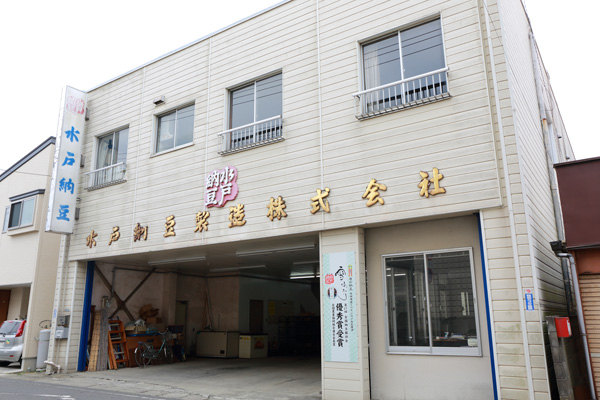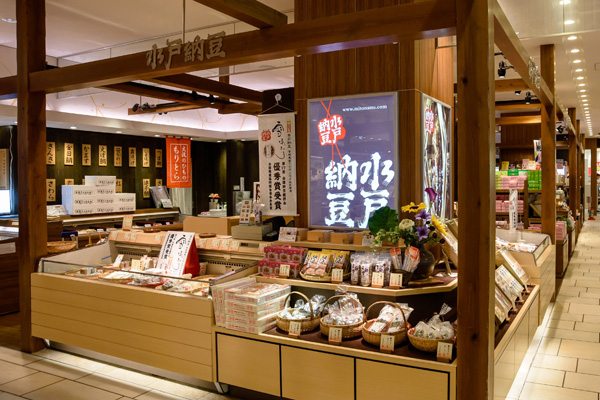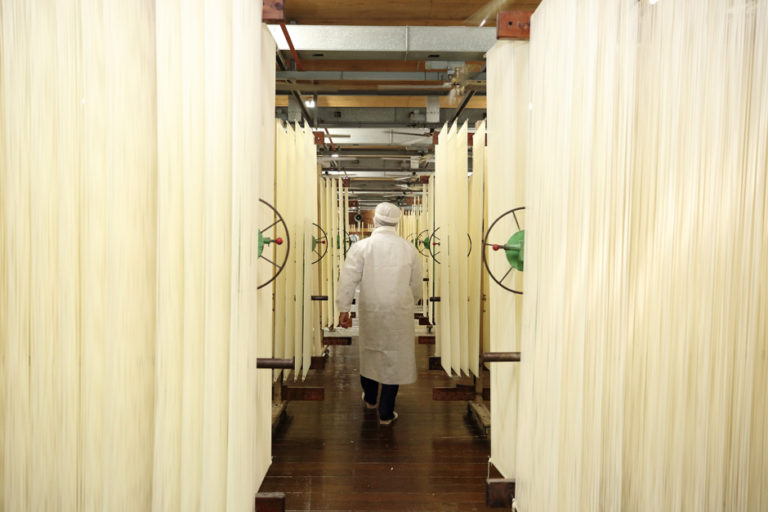The Famous Region of Natto, the Accidental Fermented Food
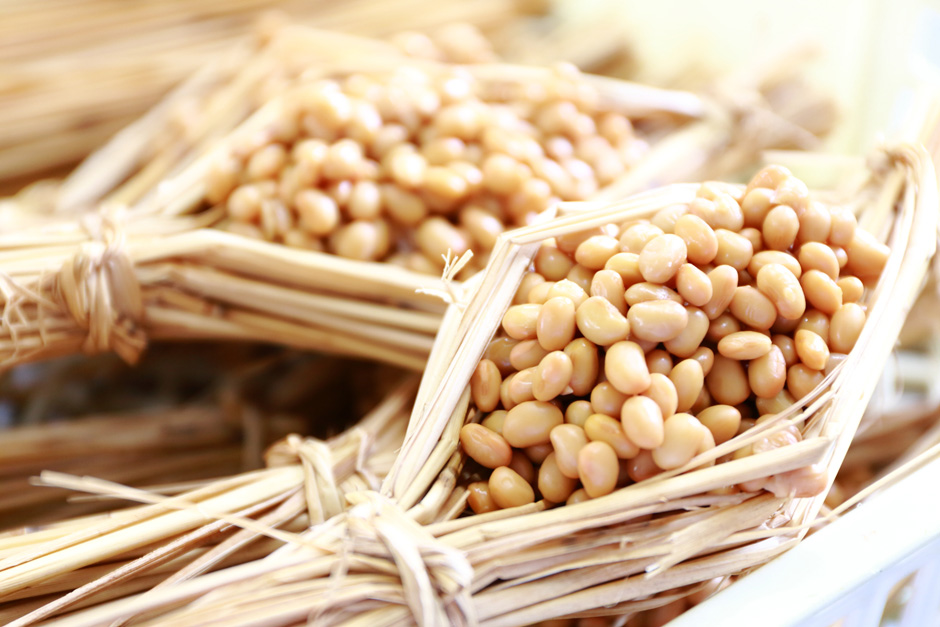
Soybeans wrapped in straw were fermented by chance to create natto

We visited Mito Natto Seizo Co., Ltd., a Mito company founded in 1929, which continues to make old-fashioned natto wrapped in straw, and asked the Senior Managing Director Daisuke Takahoshi about the history of natto in Mito.
There are various theories as to when and where natto was born. Takahoshi shared with us the “Minamoto no Yoshiie Version” that is traditionally known in the Mito region.
This version states that natto was created by chance, after rice straw bacteria adhered to boiled beans from horse feed. It is said this happened when Minamoto no Yoshiie, a famous samurai general, stayed at a residence in the town of Watari in Mito on his way to Oshu (an area in the present-day Tohoku region) during the Gosannen War in 1083.

Natto became popular as a commoner’s food only during the Edo period. It was around this time that the habit of eating natto with rice, miso soup and pickles was born.
Mito became known for its natto because the surrounding areas produced an abundance of smaller-sized soybeans, which were perfect for the food. In addition to this, the opening of the Mito Tetsudo (currently the JR Mito Line) in 1889 also had a great impact on the popularity of natto.

Old-established natto manufacturers started selling natto as souvenirs at the plaza in front of Mito Station, where there were droves of visitors for the plum blossoms at Kairakuen, one of the three major gardens in Japan. It is said that the natto sold here became extremely popular, creating the image of Mito as the place for natto on a national scale.
Takahoshi says, “Many people believe that the natto culture thrived in Mito because they were good businessmen. However, this region traditionally has farmers making their own straw-wrapped natto, and there are even ways of enjoying natto unique to this area, so you can say that natto is a dish that is deeply rooted in the lives of Mito citizens.”
Making natto is simple, but calls for vast knowledge and expert intuition

As one can notice from its accidental origins, making natto is quite simple. Basically, all you need to do is boil soybeans and add natto bacteria for fermentation.
However, creating delicious and aromatic natto constantly in a sanitary manner is another story. Vast knowledge and long years of experience are needed for this task, spanning from selecting soybeans to controlling fermentation of the natto bacteria.
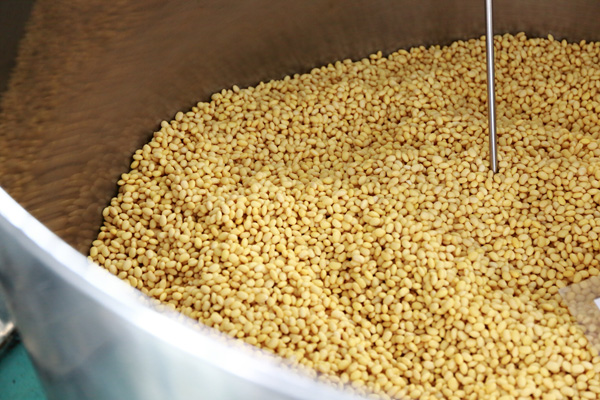
Manufacturing natto at the Mito Natto Seizo Co., Ltd. starts from selecting high-quality soybeans shipped to the company from all over Japan. The soybeans are selected according to size such as large, small, extremely small beans, and also their flavor, softness and other factors for optimal natto production.
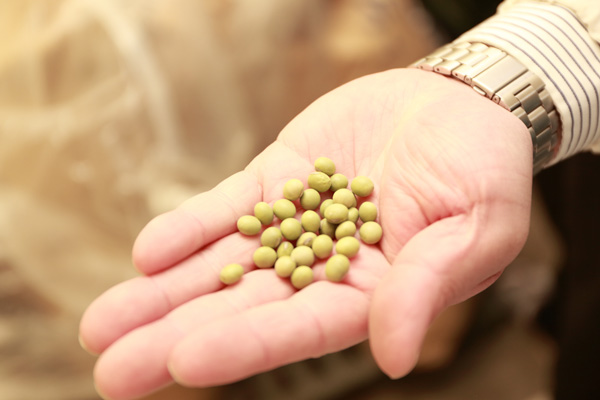
For example, the company’s leading product Yukiakari uses the soybean Miyagi-shirome from the Kurokawa area of Miyagi Prefecture. These soybeans are grown in fertile Kurokawa soil and a lush natural environment, resulting in large, very sweet soybeans with soft husks, which makes natto having excellent sticky strings.
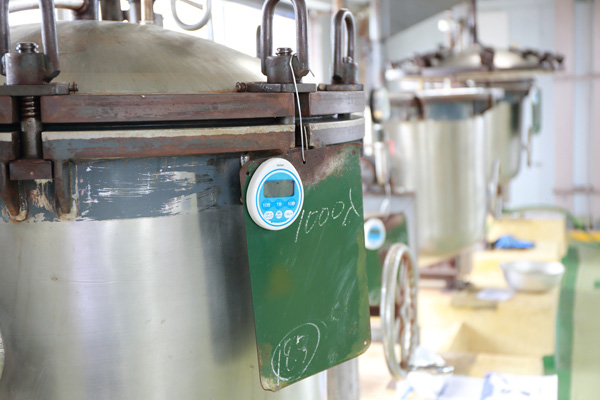
The recently developed Aokagura product uses the Yoshikawa Blue Soybean, a local type of soybean found in the Yoshikawa District in Niigata Prefecture, which is known for its abundant spring water. The Aokagura utilizes the color and flavor of these blue-tinged soybeans, creating natto with a simple taste and rich deepness like edamame beans. Takahoshi often visits local soybean farmers in person to share information on the growing status and more.
Soybeans shipped to the company are sorted, washed and soaked before being steam cooked in a pressure cooker. The step with natto bacteria comes after the soybeans are cooked.
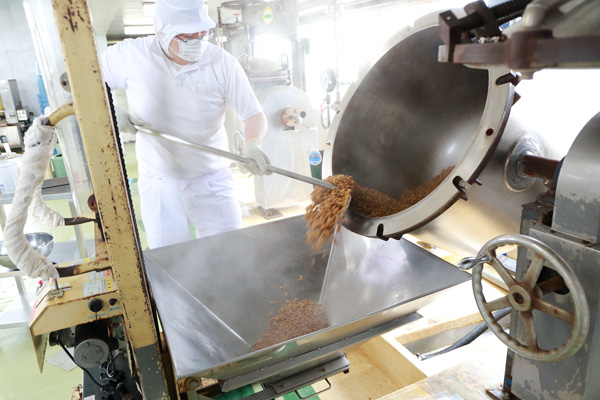
Although natto bacteria is naturally found in rice straw, natto bacteria cultivated by starter culture manufacturers is used for commercialized products these days. There are only three companies in Japan that develop natto bacteria, and Mito Natto Seizo Co., Ltd uses natto bacteria from one of these companies, along with unique natto bacteria developed at the Industrial Technology Innovation Center of Ibaraki Prefecture for some products. The company says it uses a unique natto bacteria resulting from cultures gathered from over 100 types of rice straws, the source of natto bacteria, from across the country, including Okinawa and Hokkaido. Thorough testing was done on compatibility with soybeans, and strains with high natto fermentation power were selected for use.

This special natto bacteria is diluted with water and sprinkled on boiled soybeans using a watering can before being packed into containers for the next step, fermentation.
“Selecting soybeans and developing natto bacteria are both extremely important factors in making natto; however, the step that affects the taste the most is fermentation. All natto bacteria are living organisms with different characteristics. That is why it is very difficult to oversee and control fermentation conditions. One needs many years of experience to do this,” says Takahoshi with enthusiasm.
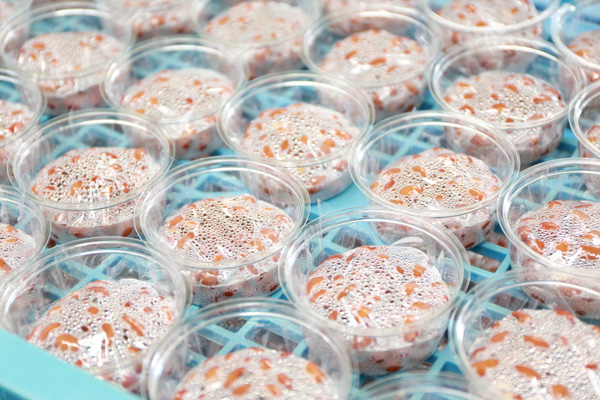
Soybean fermentation is induced by increasing the temperature of the fermentation room to activate natto bacteria. However, it is necessary to make sure that over-fermentation does not occur. Fermentation is controlled by lowering the room temperature after ascertaining the optimal fermentation condition, while controlling the temperature of the soybeans themselves in a separate system.
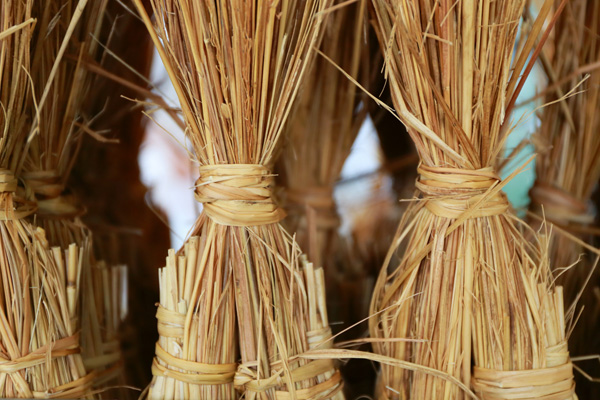
It is said that the height from the ground at storing during fermentation also affects individual fermentation results. For this reason, the shelves are exchanged frequently, meaning that the expert staff must stay by the soybeans to the end of the process.
Spreading the tradition of natto to the modern world
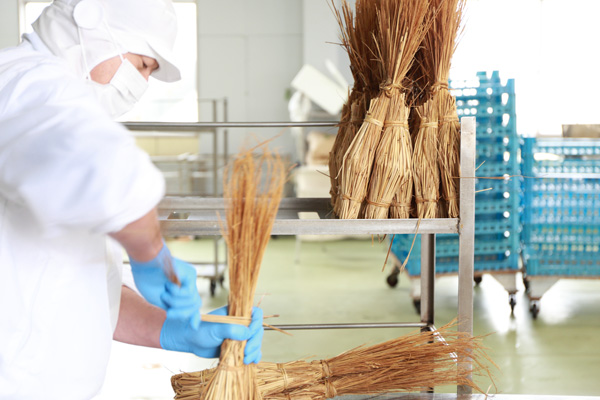
Mito Natto Seizo Co., Ltd sells their natto in plastic containers, and also traditional rice straw wrappings. The staff swiftly and deftly wraps the boiled soybeans within straw bundles, a process that is almost spellbinding.
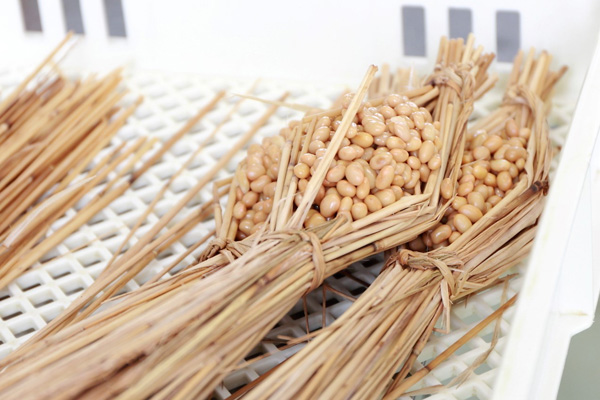
In recent years, the harvest and drying of rice has become automated, causing a decrease of rice straw that can be used as natto containers. That is why Mito supports activities in which farmers produce and dry rice straw that are carefully processed into warazuto (straw wrappers) at employment support facilities for handicapped people, which results in a stable supply of high-quality straw wrappers. In recent years as well, it is said that many visitors are looking to purchase the rustically-charming Mito natto in straw during sightseeing seasons such as the plum blossom season at Kairakuen.
Another product is the traditional Soboro Natto of Mito, which features dried radish strips mixed in with natto. The crunchy texture from the radish and the sticky stringiness of natto are an exquisite combination, making the eating texture very popular.
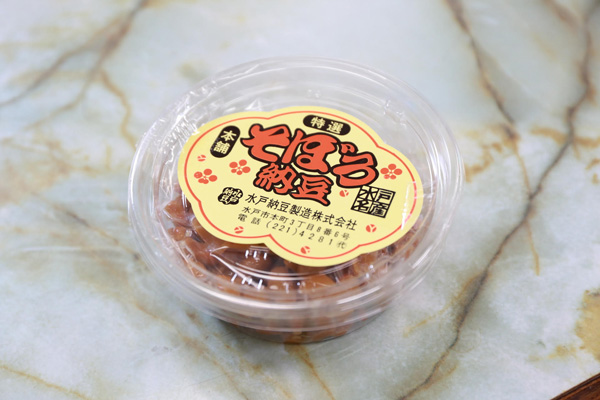
“Natto dumplings containing natto and green onions are also very delicious. The taste of natto radically differs depending on types of soybeans, so I suggest experimenting with various types of natto,” says Takahoshi.
Mito continues to hand down its natto culture, even in the present day. If you are a natto fan, why not visit the area and experience its history and food?
Mito Natto
Source:Mito Natto Seizo Co., Ltd, Daisuke Takahoshi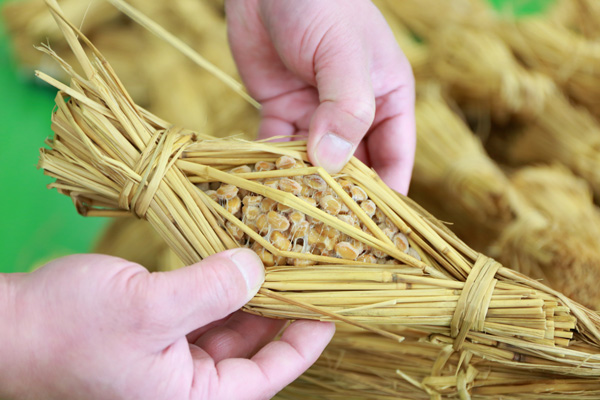
Peak Season
Winter, when it is cold.
How to enjoy them
Commercial natto products are tastiest right before their best-before date, when fermentation and its flavor are at their peak. Eating natto simply with hot rice is delicious, but natto dumplings with natto and green onions are also highly recommended.

